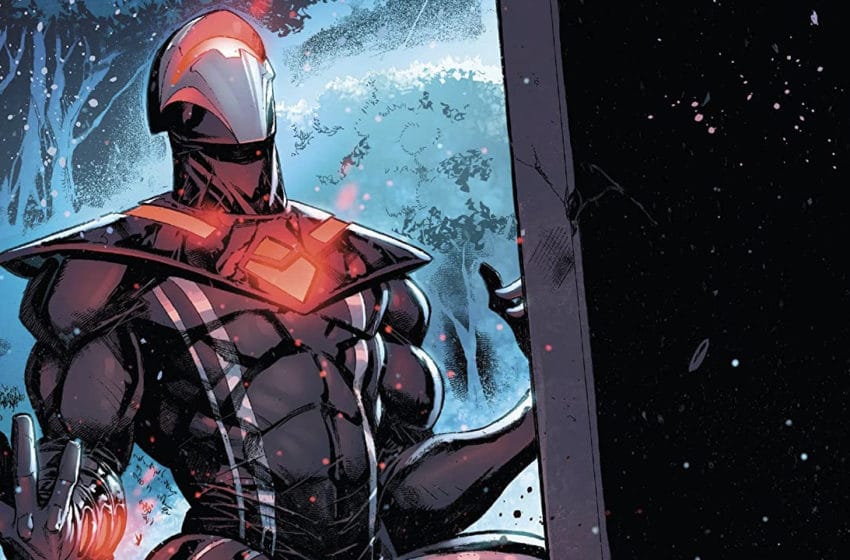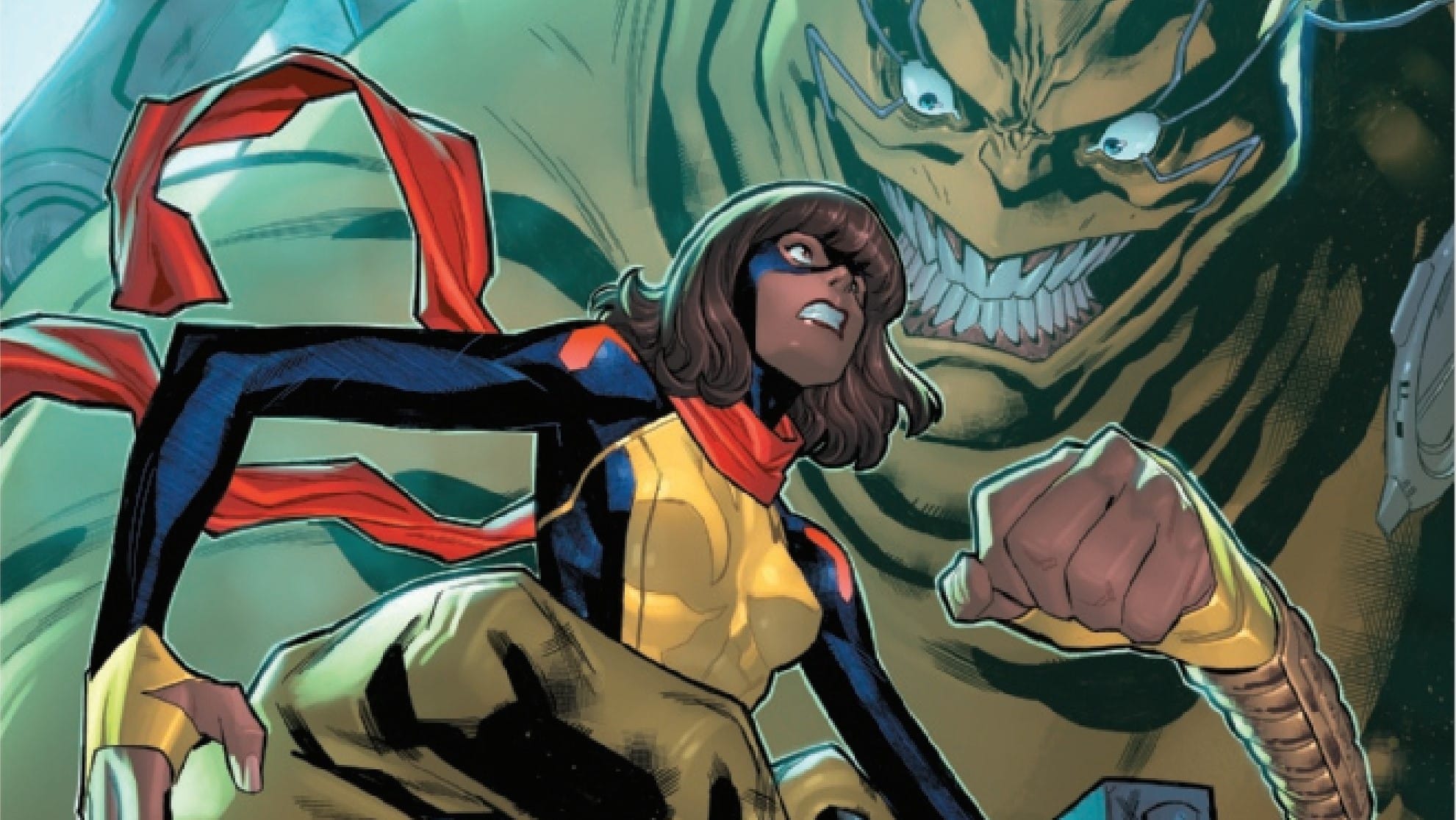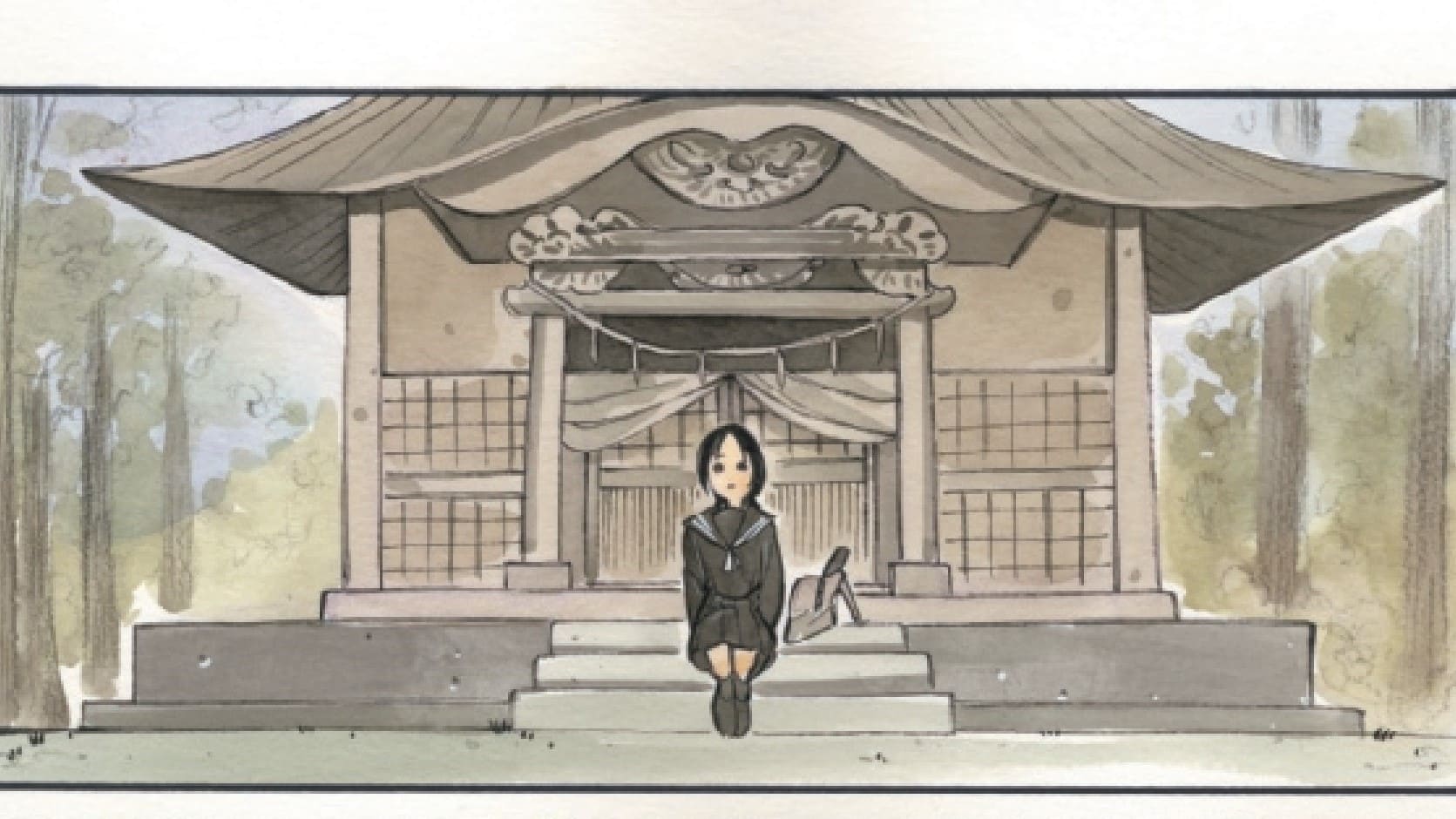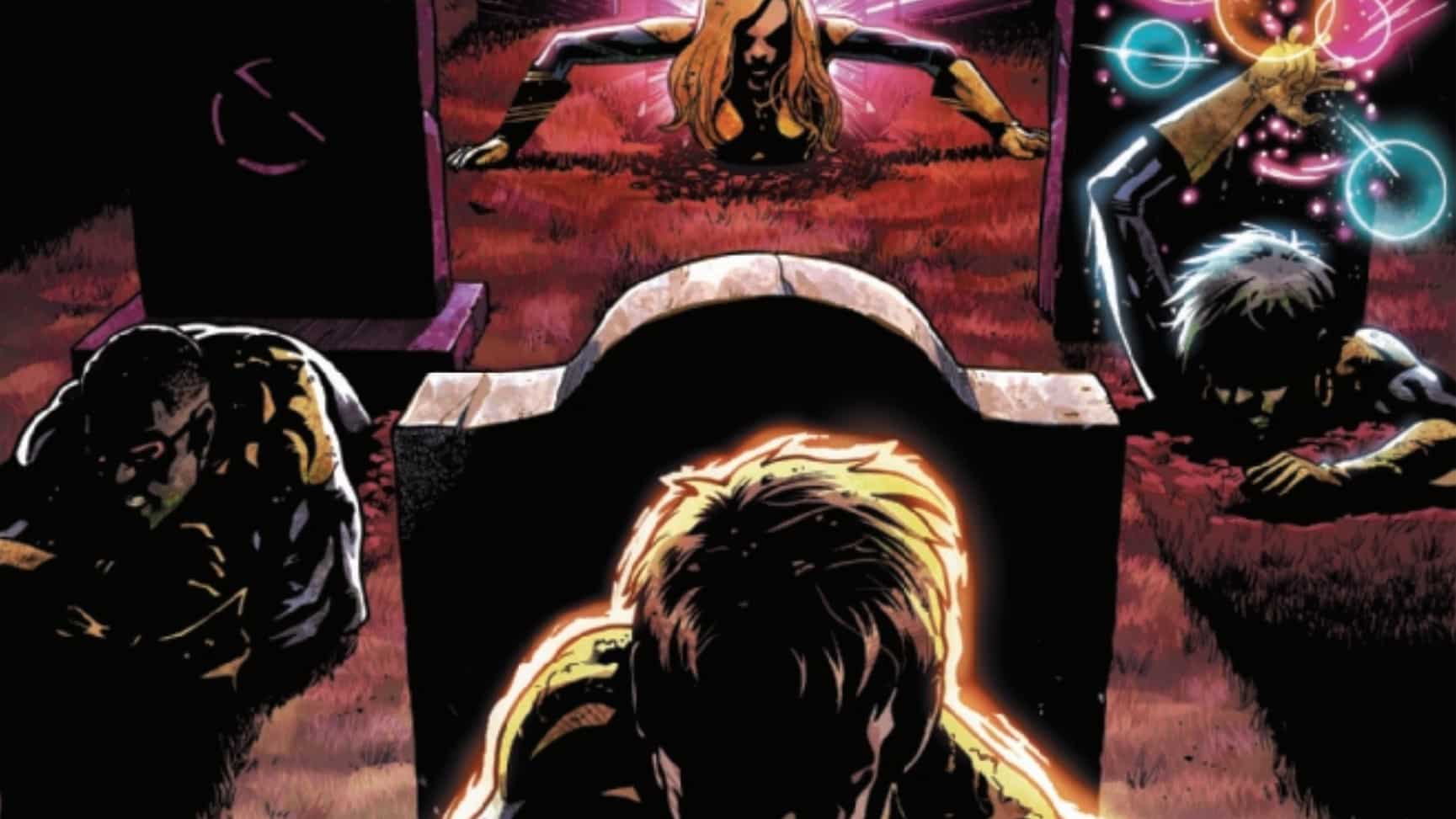Darkhawk is a Marvel Comics character whose trademark must periodically be refreshed. Darkhawk #3 is written by Kyle Higgins, with art by Juanan Ramírez, colors by Erick Arcienaga, and letters by Travis Lanham.
After three issues of Darkhawk Juanan Ramírez has become one of my favorite action-and-combat artists. The last half of Darkhawk #3, an otherwise grindingly predictable After School Special of a comic, shows us Darkhawk lifting, dropping a bad guy from high in the air, and then catching him in a dramatic demonstration that superheroes don’t generally kill people but they bluff all the time. We see Darkhawk in pitched melee battle, fending off and counterattacking and then not fending off a succession of ever-weirder armored foes. One is a small pink brain inside an enormous armored amber sphere with limbs, like a deep-sea exploration bot gone bad. Another has rippling armored skin like Colossus — and a pellet gun.
A third antagonist, the one who finally rockets Darkhawk out of a warehouse and into a river, looks like a medic droid from the Star Wars films, except ripped and dangerous. Closeups of Darkhawk, seen through or right next to his mask, demonstrate how this inexperienced hero alternates between instinctively knowing how to fight (as Darkhawk) and self-consciously having no clue (as Connor). Ramírez and Arcienaga know how to do this sort of thing so well that reading these pages feels like playing an immersive, futuristic, fast-paced, first-person video game: at least, it feels the way I felt the very few times I’ve played one. If you’re a serious gamer, your results may vary.
But Darkhawk isn’t just a comic about fights: it’s a comic about multiple sclerosis, Connor’s condition, before and after he acquired the armor, and like the earlier issues, this one spends time explaining how the condition works. The lesions can get worse unexpectedly; they can also restrict your activity more if you overexert yourself or let yourself overheat, and that’s a special concern, alas, for a kid who’s always defined himself as an athlete.
Pages with Connor, his father, and his doctor feel more like public health ads than like ways to advance the rest of the comic, but they’re well-done, important public health information baked into the story, to accompany the interview with another MS patient-advocate at the end of the comic in prose. “There’s nothing wrong with normal physical activity and aerobic exercise,” a mustachioed doctor tells our hero. “It can even help prevent MS-related physical and neurological fatigue. That said, overheating is something we need to watch out for.” It’s easy for me to imagine a youngish reader who benefits immensely from the exposition here.
At least if that reader’s a guy. For the second issue in a row, Kyle Higgins has managed to write, and Darren Shan to edit, a comic book with not a single woman in it. Not even in some background, non-speaking role. I know Darkhawk began as a 1990s hero, but that’s one part of 1990s cape comics that might be best unrevived. I’m rolling my eyes, not only at the continuing sausage party, but at the predictability in the rest of the plot: Connor finds out that his best friend Derek died at the hands of the gang he briefly joined, then goes to (of course) a big warehouse to find out whodunnit and beat that guy up. It’s the most plain vanilla of high school hero plots, with nothing surprising about it, and though it does require that our hero be new to his powers and new to his adventuring, it’s not especially connected to Darkhawk as a concept or power set: except for the MS it could be a Spider-story.
In fact, it is. When Darkhawk ends up in the river, a Spider-person — I think it’s Miles Morales? — shows up to fish him out and make a Spider-quip about learning to fly before you can swim. It’s a dramatic moonlit full-page panel of a rescue, fun to watch, elegant and dynamic, with web-lines that parallel tall construction equipment and Darkhawk himself making a perpendicular Pietá figure in Spider-Man’s arms. It’s the last of several terrific spreads that Ramírez and Arcienaga turn in. I wish the script had given them — and, for that matter, me — more to say.
Stephanie Burt is Professor of English at Harvard. Her podcast about superhero role playing games is Team-Up Moves, with Fiona Hopkins; her latest book of poems is We Are Mermaids. Her nose still hurts from that thing with the gate.






